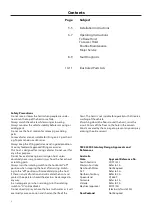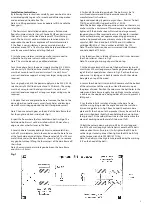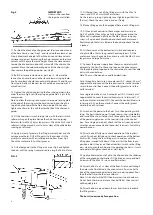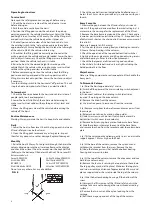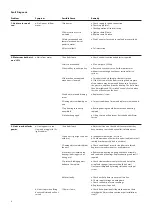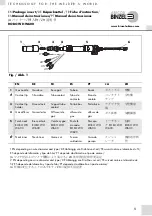
8
9
Problem
Symptom
Possible Cause
Remedy
1. Hoist motor won’t
run.
a. No Noise at all from
motor.
1.No power.
a. Check supply for good connection.
b.Check supply fuses.
c.Check operation of isolator switch.
2.Chain tension switch
activated.
a.Tighten chain if loose.
b.Replace chain if broken.
3.Motor overloaded and
thermal overload has cut
power to motor.
a. Wait 5 minutes for circuit to cool and reset overload.
4. Electrical fault.
a. Call electrician.
2.Motor runs but hoist
won’t lift.
a.Noise from motor.
1.Vee belts loose.
a. Check vee belt tension and adjust as required.
2.Hoist is overloaded.
a. Max. weight is 3000kg.
3.Sheared key in either pulley.
a. Remove drive cover to see if either pulley turns
without transmitting drive to next section of drive
system.
4.Obstruction encountered
when hoist is lowered.
a. Drive hoist up by
inching
to clear obstruction.
b. If this fails to work, the bolts securing the base plate
of the column may be loosened by one turn to relieve
the pressure, and then drive the hoist up. The bolts must
then be retightened.
This method can only be used when
there is not a vehicle on the hoist.
5. Load nut worn and binding
screw.
a. Replace nuts/ screw.
6. Damaged screw binding on
nuts.
a. Inspect condition of screw and replace screw and nuts.
7. Top bearing incorrectly
assembled.
a. Bearing housing should be removed and bearing
replaced.
8. Interlock engaged.
a. Lift nut worn out. Replace as described under ‘Major
Service’.
3. Hoist runs but lacks
power.
a. Hoist appears to run
slow and struggles to lift
light vehicles.
1.Vee belts loose.
a. Adjust belt tension, check belts to ensure that they
have not been stretched beyond limit of adjustment.
2. Load nuts tight (get very hot
with use).
a. Inadequate lubrication -oil screw.
b. Check operation of hoist while under load (nuts are all
initially firm but quickly ‘bed in’ with use).
3. Damaged screw which binds
the nuts.
a. Check condition of screw for rough or torn thread.
Replace screw and two nuts as a complete set.
4. Incorrectly assembled top
bearings (housing gets hot
during use).
a. Remove top bearing housing and check assembly
and condition of bearings. Replace bearings and seal if
required.
5. Sprocket binding against
bottom of base plate.
a. Check clearance between sprocket and base plate
using feeler gauges (clearance should be 6 mm).
Clearance is adjusted by turning slotted nut at top of
screw.
6. Motor faulty.
a. Check each of phases to ensure all are live.
b. Check supply voltage on each phase.
c. Check continuity of motor windings.
d. Replace motor if required.
b. Hoist stops when lifting
heavy vehicles and will not
restart .
1.Chain is loose.
a. Check free operation of slide mechanism on chain
switch guide. Adjust chain tension as per installations,
step 13.
Fault Diagnosis


